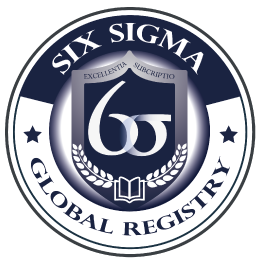
Six Sigma Master Black Belt International Certification
American Society for Quality (ASQ) BOK Aligned Certification Program
The Master Black Belt Certification teaches how to manage an improvement program that is linked to the success of the organization, not just savings projects. This program offers an intensive solid curriculum that is based on a judicious application of the next generation of Six Sigma and Lean concepts through an integrated system of Operational Excellence and Project Management.
This course prepares the candidate to:
- Lead an existing business improvement program.
- Develop a new business improvement program.
- Facilitate targeted strategic planning discussions
- Develop beneficial business performance dashboards.
- Become a coach and mentor to Lean Six Sigma professionals.
- Provide training in Lean Six Sigma.
- Improve your team leadership skills.
- Success in advocating for change within your organization.
- Management of advanced tools for DMAIC, DMADV and IDOV projects.
This training and certification is designed for Certified Six Sigma Black Belts with three years of experience and who have completed at least four successful projects as project leaders, a strong statistical and analytical background is important. of Six Sigma projects.
The traditional apprentice-master model. This is based primarily on the recognition that true mastery cannot be gained through the Lean Six Sigma Master Black Belt development approach and has evolved to reflect didactic learning alone. Mentoring support is provided on a decreasing scale offset by increasing levels of autonomy and the assumption of responsibility for subordinate projects, the delivery of training and mentoring. The Acosixsigma Master Black Belt program is customized to the client organization. The topics presented below are included in the training part of our Master Black Belt apprenticeship. The training is followed by an apprenticeship period with an experienced Master Black Belt, at which point the candidate learns various advanced techniques such as leadership, facilitation, mentoring, and statistical analysis.
Our programs also have the exclusive endorsement for Latin America of Six Sigma Global Registry. With this achievement we offer our clients one of the most prestigious certifications in the world. This adds to the alignment of the certification topics with the Body of Knowledge of the American Society for Quality, which translates into better applications for the participants and a wide repertoire of tools that were not previously included in the Black Belt and Green certifications. Belt.
- instructors

Eri G George
- Systems Engineer from the University of Massachusetts - Lowell with specializations in Process Engineering and Robotics.
- Postgraduate degree in Information Technology Administration from the University of Phoenix.
- Six Sigma Black Belt certified by Sunbeam Jarden Consumer Solutions company in 2005 with recertification in 2006, 2007 and 2008.
- Certified in Advanced Problem Solving and Root Cause Analysis/FMEA by Worcester Polytechnic Institute.
- SQA/ORT Quality Auditor in Asia and Latin America.
- Synergy Technology Solutions Associate Instructor for Six Sigma and Lean Manufacturing.
- Member of the Colombian Society of Six Sigma (Acosixsigma) of which he is an active contributor to the Tools and Tactics section of the members' area.
- He currently serves as president of the same organization.

Roger A. Mejia
- Specialist in Project Management from the National Open and Distance University.
- Industrial Engineer from the Technological University of Pereira.
- Certified Scrum Master, International Six Sigma Black Belt certification and Master Black Belt from Six Sigma Global Registry.
- Yellow Belt Instructor, Green Belt, Black Belt and Master Black Belt for Acosixsigma.
- Responsible for the implementation of performance management models, design of strategic maps, application of Kaizen accelerated improvement events and analysis of production processes in fundamental practices.
- Experience with more than 200 Belts trained in Colombia and Latin America. He has actively participated in the implementation of more than 100 projects with savings of more than 300 million dollars since 2014.
- He currently works as Project Coordinator and Senior Consultant at the Colombian Society of Six Sigma – Acosixsigma.
MODULE 1 – Leadership of the Master Black Belt
- Work SMART (Exercise 1)
- Results Orientation
- Certification Requirements
- Project Feasibility Matrix (Exercise 2)
MODULE 2 – Deployment of Lean Six Sigma in Companies
- Alignment with the Strategic Plan (Exercise 3)
- Six Sigma System Deployment (Exercise 4)
- Opportunities for Improvement (Exercise 5)
- Risk Analysis (Exercise 6)
- Organizational design
MODULE 3 – Support to Executive Leaders
- Management Seminar (Exercise 7)
- Champion Training
MODULE 4 – Strategy Alignment
- Voice of Business
- Development and Deployment of Strategic Goals
- Alignment of Projects with the Strategic Plan
- Alignment of Projects with Business Objectives
MODULE 5 – Project Management and Results
- Project Management Basics
- The Structure of the Division of Labor (WBS)
- The estimation of times
- resource management
MODULE 6 – Voice of the Customer and Voice of the Business
- VOC and VOB identification
- VOC Tools
MODULE 7 – Change Management
- The BB and MBB as Change Agent
- Cultural change
MODULE 8 – Project Team Management
- Teamwork
- Effective communication
- The dialogue
- Build trust
MODULE 9 – Problem Definition and Project Charter
MODULE 10 – Current State Measurements
- Capacity Six Pack
- Process Capability Comparison
MODULE 11 – Advanced Data Analysis
- Design of Experiments with Multiple Responses
- Desirability Function Optimization and Method – 106
- Advanced Graphics Tools
- Nonparametric Data Analysis
- Advanced Analytical Tools
- Advanced Reliability
MODULE 12 – Advanced Improvement Tools
- Introduction to Operational Evolution (EVOP) – 114
- SWOT Analysis
- PEST analysis
- Kaizen Event Management
- Lean Thinking in Continuous Improvement
MODULE 13 – Advanced Control and Sustainment
- Statistical processes control
- Introduction to Tolerance Design – 108
- min-max method – 109
- Root Sum of Squares Method -110
- The loop diagram – 111
- Linear case – 112
- Non-linear case – 113
MODULE 14 – Mentoring and Coaching
- What is Coaching? – 103
- The different types of Coaching -103
- How to give Coaching: Instruction Techniques: Presentation, teamwork, group discussion and solution of structured exercises. – 103
MODULE 15 – Design for Six Sigma
- DMAIC vs. DMAV
- Phase Define
- Measure Phase
- Analyze Phase
- Design Phase
- Verify Phase
- INTENSITY
- 200 hours
- INVESTMENT VALUE
- $3,000
- INCLUDES
- Teaching materials.
- 1 year of membership in SigmaNet for support materials, seminars, forums, free seminars and discounts on Six Sigma and Operational Excellence activities.
- Virtual follow-up in Project Manager to certification projects for 12 months once the face-to-face training is finished.
- Attendance certificate
- Six Sigma Expert Rating Test
- International Certification Plate upon successful completion of the project.
- Permanent registration in Six Sigma Global Registry for certification verification recognized in 165 countries.
- Minitab temporary license
- Lean Six Sigma DMAIC and DMADV Tools Scheduled Templates in Excel
- Memories of the presentations.
Reports
Latin America
United States and Europe
[captainform id=»1343200″ lightbox=»1″ url=»https://www.acosixsigma.com/wp-content/plugins/captainform/public/images/COMPRAR-AHORA.png» type=»image»]
Leave us your data to advise you!
FAQ
According to the Body of Knowledge (BOK) of the American Society for Quality (ASQ) and the international certification programs recognized by Motorola University and the International Society for Six Sigma Certifications, the minimum hour number of the Six Sigma program is: There are a number of Six Sigma programs that are widely marketed and apply only a fraction of the BOK for each level. Acosixsigma is recognized for the large amount of curricular content that applies to all types of industry. For example, the estimated time for a Black Belt certification course is 120 hours, not including additional time allocated to a Six Sigma project. Other providers offer Black Belt training courses totaling 90 hours and Green Belt courses advertised at 56 hours. Therefore the variability in class hours obviously serves as a warning for interested companies to carefully check the subjects when taking a particular course against the established criteria for certification.
A Lean/Kaizen/Blitz Event is an intense effort where the team applies specific Lean approaches to reduce waste, defects, and cycle time and to implement improvements in a particular process or department.
Lean Six Sigma is an integrated set of methodologies that encompasses both Lean and Six Sigma concepts. It combines two powerful toolsets to address all aspects of quality, cost, and delivery. Both sets of methodologies have a customer and quality focus and are based on continuous improvement, which allows them to be very complementary.
Lean focuses on offering competitively priced products and services by eliminating waste and its drivers, while Six Sigma focuses on minimizing and reducing process variation that causes nonconformities.
Lean Six Sigma combines the strength and rigor of Six Sigma and data-driven analysis with the simple tools of Lean to eliminate waste and its drivers. The combination of the two methods provides a more robust set of tools for organizations to apply to solve problems, using the tools and techniques that best suit the specific problem at hand. Rather than the traditional independent use of tools, Lean Six Sigma combines Lean approaches into Six Sigma through the DMAIC (Define, Measure, Analyze, Improve and Control) method, as well as allowing Lean approaches to be used on their own. in the DMAIC model.
Process improvement is necessary for the performance of an organization that does not meet customer requirements. Lean Six Sigma offers a comprehensive set of tools, techniques, and approaches to enable an organization to gather customer requirements, analyze existing performance against those requirements, implement solutions to address performance gaps, and maintain best-in-class status. The tools and techniques used are the most appropriate for the specific problem at hand.

